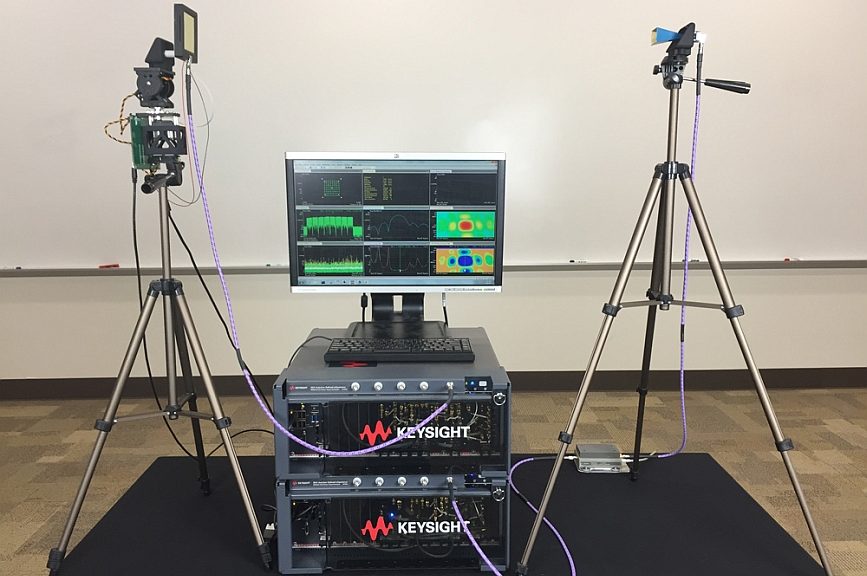Keysight and the University of California (UC) San Diego announced the achievement of an extremly fast bidirectional phased-array link in the 28 GHz 5G band.
The demonstration included a 64-element array that achieved a data rate of 12 Gbps at 0 degrees and more than 8 Gbps over all scan angles up to ±50 degrees in azimuth and +/-25 degrees in elevation at a link distance of 300 meters. The array produced data rates of up to 18 Gbps at shorter distances. The bit-error-rate was less than 10-7 at maximum scan angles. The results did not rely on any calibration on the 64-element phased-array, thereby greatly reducing implementation costs.
The 64-element phased array, built on a low-cost printed-circuit board, only consumed approximately 7-11 W of DC power in either its transmit (Tx) or receive (Rx) modes thanks to the UC San Diego high-performance system-on-a-chip (SoC) designs that uses a third-generation silicon germanium (SiGe BiCMOS SBC18H3) process from TowerJazz.
UC San Diego used Keysight’s Signal Studio software to define and generate the 16-QAM and 64-QAM waveforms, with single and multiple carriers. Keysight’s 81199A Wideband Waveform Center software helped the team link the Tx and Rx units as well as improve the error vector magnitude (EVM) performance. The team also used Keysight’s 89600 VSA software to perform demodulation, channel equalization and analysis of advanced signals.
Keysight’s M8195A arbitrary waveform generator, E8267D PSG vector signal generator and DSOS804A high-definition oscilloscope were used to enable rapid prototyping as well as link equalization and state-of-the-art performance measurements across modulation bandwidths of up to 3 GHz frequencies.






